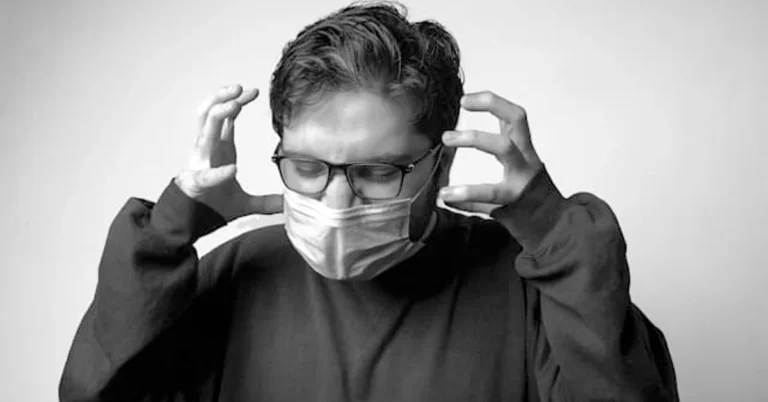The human brain functions as the master controller, which oversees both mental operations and physical movements and vital body functions, including breathing and heart rate regulation. The body produces unexpected reactions when structural disturbances occur. Certain brain and spinal cord conditions demonstrate this pattern of development. A hidden condition remains undetected until symptoms emerge, which become both persistent and hard to dismiss.
Headaches and Balance Issues
The initial symptom that usually appears is headache pain. The pain takes three different forms, ranging from sudden intense waves to steady pressure, and becomes worse when the body moves quickly. A sudden cough, sneeze, or strain on the body triggers rapid pain waves that affect the neck and back of the head. This headache type stands apart from regular migraines and tension headaches, which makes it a concerning symptom on its own.
After headaches, dizziness and balance problems emerge as secondary symptoms. Rising from a seated position too fast can trigger dizziness, and maintaining straight walking becomes difficult. The body’s basic movements become unsteady, while coordination requires additional mental concentration. The unstable condition creates two problems: People experience repeated falls and struggle to see distances accurately.
Numbness, Weakness, and Muscle Control
Numbness and tingling sensations often develop in the arms, hands, and even legs. These sensations can range from mild to severe, sometimes causing temporary weakness or even difficulty gripping objects. Holding a cup of coffee or buttoning a shirt becomes frustrating when fingers refuse to cooperate. In some cases, muscle weakness extends further, making simple tasks like climbing stairs feel unusually exhausting.
Vision disturbances can also arise. Blurred or double vision, light sensitivity, and eye fatigue become frequent complaints. Reading for extended periods may cause discomfort, and bright lights can trigger intense headaches. Some experience rapid, uncontrollable eye movements, making it difficult to focus on objects. Over time, these visual disturbances interfere with daily activities, adding another layer of frustration.
Speech, Swallowing, and Hearing Difficulties
Speech and swallowing difficulties may also develop. Words become slurred, and forming sentences requires more concentration. Swallowing feels unnatural, and eating certain foods becomes a challenge. Some individuals experience frequent choking or a sensation of food getting stuck. These issues can lead to dietary changes, often limiting food choices to softer textures that are easier to swallow.
Ringing in the ears, known as tinnitus, is another distressing symptom. The persistent hum, buzz, or ringing sound can be distracting, making it difficult to concentrate or sleep. This internal noise may fluctuate in intensity, sometimes becoming louder in quiet environments. Over time, it takes a toll on mental well-being, leading to frustration and fatigue.
Fatigue, Cognitive Challenges, and Temperature Regulation
Chronic fatigue settles in, often accompanied by disrupted sleep. Even after a full night of rest, the body still feels drained. Daytime drowsiness becomes routine, making it difficult to stay productive. This relentless exhaustion can affect mood, leading to irritability and difficulty managing daily responsibilities.
For some, cognitive challenges emerge. Concentration and memory recall become harder than before. Processing new information takes longer, and conversations require more effort. Simple mental tasks that once felt effortless now seem overwhelming. These cognitive struggles impact work, school, and personal relationships, adding another layer of difficulty.
Temperature regulation also becomes an issue. Hands and feet may feel unusually cold or warm despite weather changes. Some experience excessive sweating or an inability to sweat at all. The body’s natural ability to adjust to temperature shifts weakens, leading to discomfort in extreme conditions.
Recognizing the Signs and Seeking Help
Symptoms vary from person to person. Some may experience only a few, while others deal with a combination that affects every aspect of life. The severity also ranges widely, with some finding relief through treatment and others struggling with persistent discomfort.
Understanding these symptoms is essential. When they begin to interfere with daily life, seeking medical guidance becomes crucial. Chiari malformation can be diagnosed through imaging tests, and early intervention may help manage symptoms and improve quality of life.
Conclusion
Early recognition can make a significant difference in managing discomfort and improving overall well-being. Although this condition presents many challenges, proper care and attention can help restore a sense of control and stability. By staying informed, seeking professional guidance, and adopting healthy lifestyle habits, individuals can better navigate symptoms and improve their quality of life. Support from loved ones, consistent medical follow-ups, and stress management techniques further contribute to overall recovery.

